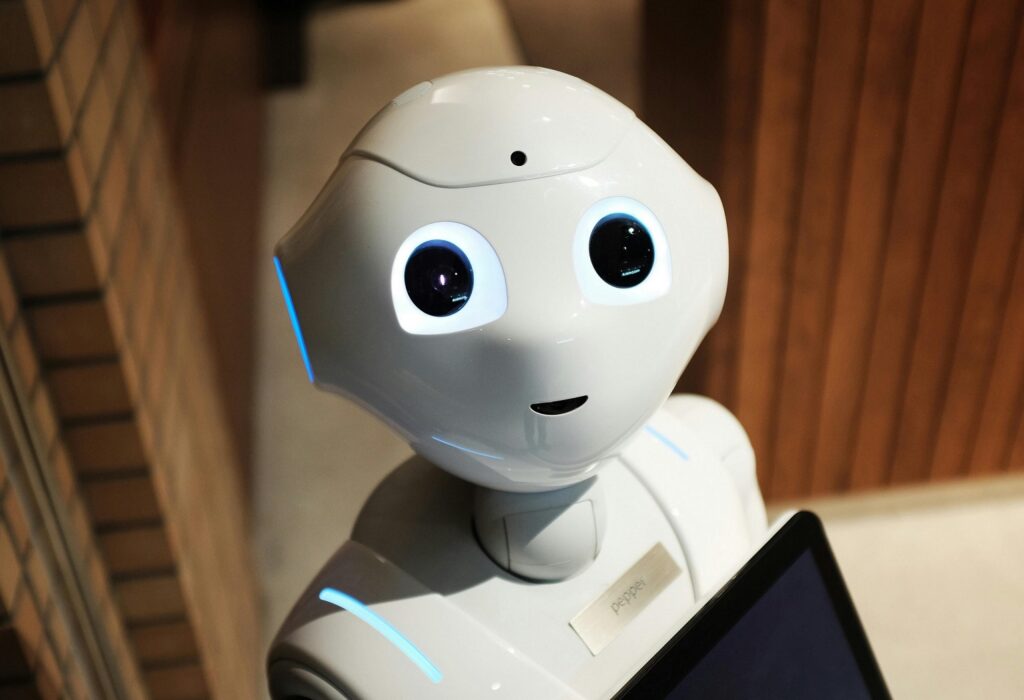Tagged Under:
Sustainable Excellence
Adapt your educational visions for community needs without compromising standards. Emphasize long-term commitment and realistic goal setting.
We had a clear picture and script in our minds of what being an impactful music educator would look like. We’d enter these programs and elevate these kids to new heights: district, state and national events. Our programs’ names would be in the spotlight, and our students would be a part of one of those renowned programs.
We finally landed the job, got our keys and settled in. We set up everything, planned our concerts for the next year or so, but really focused on that first performance. We were ready to burst onto the scene like a rocket and show everyone how it’s done.
However, that’s not what happened. Sure, our concerts may have been successful, but we never quite gained the traction we thought we would, nor the momentum that the programs we idolized had. In fact, it turned out that our goals as directors didn’t exactly align with our school and community.
As directors of our programs, we spent countless hours and money honing our craft. We are experts in our field! Naturally, we should set the vision for our program, right? Not exactly. We learned that others had visions, too. Not just our school, but every group involved with it. The students had a vision. So did the parents, administration, alumni, community and even the guys who hung around the fence after football games.
But what about us? Are we going to abandon what we wanted? Or, even worse, will we have to give up our goals?
The word “compromise” can be polarizing. On one hand, it’s a way to unite everyone and achieve a common goal; everyone gets a bit of what they want or need. On the flip side, it might mean that no one gets what they want; instead, we just have to settle.
We love our roles, yet these positions, like many teaching jobs, come with significant challenges. Many music teachers start their careers with high aspirations: conducting concerts, participating in state events and aiming for national recognition. However, reality is different due to various factors, such as a lack of awareness or differing priorities within the school or community. Shifts, ranging from new opportunities to rebuilding post-pandemic, may alter our paths. However, viewing these discrepancies as chances to redefine success and set realistic goals can be enlightening. They may actually be opportunities to understand our community and ourselves better.

Redefine Success
In music education, there is no single definition of success. When we see outstanding performances by nationally renowned schools at professional conferences, we see a snapshot of what can result when effective systems are put in place that allow these schools to become nationally renowned in the first place. What we do not see are how these programs’ frameworks were conceptualized, the longitudinal growth these ensembles (and directors) experienced throughout the years, or what these schools’ novice groups sound like.
It is therefore important not to view success exclusively as a checkbox of high-profile achievements, but more of a SUCCESS-ion of little victories. Where we find ourselves along our success continuum is not as important as the journey itself. Especially in programs with limited resources, success should be more about the lasting, positive impact on students’ lives, and not just reaching for prestigious recognition. This means embracing creativity and resilience, even when faced with challenges like outdated instruments or tight budgets. We know — it’s easy to say when you have everything you need.
Mariachi Case Study: In such scenarios, success could be about innovatively engaging students with what’s available, focusing on music theory and appreciation, or fostering community involvement for support. I (Justin) teach at Dwight D. Eisenhower High School in Blue Island, Illinois, which has a high Mexican student population. In fact, many of my students grew up with mariachi music in their households. Even though I did not, I thought it would be foolish to cast this rich musical tradition aside in favor of playing classic band literature. After all, I wanted my students to be curators of their musical education, not just consumers.
After a year or so on the job, I created a mariachi band that was open to anyone who was interested in performing or learning mariachi music. As the program grew, I raised funds to purchase authentic instruments like the guitarrón and vihuela. Every year since, my students have collaborated to teach each other the artform, arrange popular songs, develop rehearsal strategies and perform throughout the community. Just last spring, our final project involved creating a mariachi-style arrangement of our school’s fight song from 1961. Students translated the lyrics into Spanish, wrote and taught each other their own parts using a modern band approach, and then they created a studio recording of the song. The entire process was a huge success and was one of the most memorable experiences of last year’s senior class. Even though this success did not come in the form of straight Division Is at a state or national festival, it wasn’t about that, nor was it supposed to be. Instead, it was more about the joy and growth in students as they mastered new concepts, reflecting the true essence of music education.
Ultimately, redefining success in music education is about shifting focus from limitations to possibilities. It’s about the small yet significant impacts — the growth, the “aha” moments and the joy of learning. Drawing inspiration from other subjects, like the collaborative spirit in science or the engagement focus in math, can enrich music teaching. It’s about creating a music class that’s more than just notes and rhythms; it’s a space for growth, connection and enjoyment. Music is about harmony after all, and that should be reflected in how it’s taught.

Play The Long(er) Game
I (Don) have a friend who is in their 12th year of teaching. A couple of years ago, they wanted to leave their position. They felt they had accomplished what they could in their current role and believed a new job would offer new opportunities. I wholeheartedly disagreed. As a good friend, I had to be honest with them.
While a new job can present new opportunities and a fresh start, moving to a new school means leaving behind not only past mistakes but also your credibility, relationships and progress within your school and community. We’re not suggesting that people should never pursue a new job; we absolutely encourage doing what’s best for you. But in this case, I felt this educator was on the brink of a breakthrough. We discussed their current position and aspirations. It turned out their concerns were more about personal professional growth than about the school or community. Feeling professionally stunted, they struggled to find ways to improve, a common challenge for music teachers who often work in isolation.
After further discussion, they decided to stay another year or two. They embraced their weaknesses and sought help from retired teachers and current colleagues. They revamped their warm-up and technique methods, moving from what they did as a student to techniques that better served their students. They discarded limiting beliefs like: “Kids at this age can only focus on notes and rhythms” and “I can’t connect with Title I kids because I wasn’t one.”
The job became harder, but also more rewarding. The music groups improved, enrollment increased and non-music students expressed interest in joining. Open dialogues emerged, with students sharing their interests in pieces and festivals. The instructor, too, became more open about discussing students’ goals and aspirations. Together, they decided on their objectives, where to perform and how to conduct rehearsals. Within two years, the culture transformed.
The group enjoyed success, receiving festival invitations and working with visiting composers, who the students eagerly sought autographs from. The change extended to the community: home concerts became packed events with audiences respectfully silent during performances and giving standing ovations afterward. When asked about the key to sustainable excellence, the instructor pointed to the day-to-day rehearsals. These sessions, regardless of upcoming events, have turned into environments where students explore advanced concepts and, like the instructor, push through fear and apprehension. While recognition and performances are rewarding, the program’s greatest achievement is thriving within the community they created.
Patience and commitment are indispensable virtues in the journey of an educator, especially in the field of music education. Success in this realm is rarely immediate; it’s often the result of years of diligent work, continuous learning and gradual improvement. It’s crucial for music teachers to understand and embrace this “long game.”
The journey will inevitably include setbacks and periods of slow progress, but these challenges are not indicators of failure. Instead, they’re opportunities for growth and learning. Perseverance and resilience become key, allowing teachers to steadily build a program that is both robust and impactful. It’s about setting a long-term vision and taking consistent, small steps toward it, understanding that each day’s effort contributes to a larger goal. This approach helps in creating a sustainable and enriching music program that leaves a lasting impression on students.

Self-Care
We love our programs and community, but they will absolutely take all the time that we give to them. We must reserve time and energy for ourselves and others in our lives. Look at it this way: You can’t miss something if you’re always around it.
To avoid burnout — a state of emotional, physical and mental exhaustion caused by prolonged stress — music educators must adopt strategies to sustain their enthusiasm and energy. One effective method is maintaining a healthy work-life balance, ensuring that time is set aside for personal well-being and leisure. This balance is crucial in preventing exhaustion and keeping one’s passion for teaching alive.
Additionally, seek ongoing professional development. Attending workshops, collaborating with other music educators or even pursuing further education can provide fresh ideas and renewed inspiration.
Perhaps most importantly, it’s essential to celebrate small victories along the way. Whether it’s a student mastering a difficult piece, a successful small performance or a breakthrough in class engagement, acknowledging and celebrating these moments can provide a sense of accomplishment and motivation to continue. These practices not only help in avoiding burnout but also contribute to building a fulfilling and sustainable career in music education.

Community and Culture
Integrating the cultural and community context into a music program involves specific actions like incorporating local music genres or community songs into the curriculum, inviting local musicians for guest performances or workshops, and organizing performances at community events. These steps make the music program not just an academic exercise, but a living part of the community’s cultural tapestry. For example, if a school is located in an area with a rich jazz history, include jazz pieces in the repertoire, explore the genre’s history in the region and connect with local jazz musicians for interactive sessions with the students.
Communication with students, parents and the wider community should be specific and ongoing. This might involve regular meetings or newsletters detailing the program’s progress, challenges and ways the community can contribute. For instance, if a school’s music program is planning a concert, communicate specific needs for the event, like volunteers for setup or donations for costumes, while also setting clear expectations about the students’ performance level and the concert’s theme.
Focus on cultivating a unique and authentic music program that reflects the strengths and interests of the students, rather than getting entangled in comparisons with other programs or rigid expectations of what a band program should embody. This emphasis on commitment manifests in recognizing and valuing the distinct characteristics of your school and student body. For example, if a school has a burgeoning interest in electronic music or a group of students is passionate about songwriting, the music program could pivot to support these interests, rather than strictly adhering to conventional band or choir formats. This approach not only caters to the students’ existing skills and passions but also encourages a more profound and personal engagement with music.
Moreover, it’s vital for educators to avoid getting too caught up in what other programs are doing. While it’s useful to stay informed and seek inspiration from other schools, each music program should be allowed to grow organically, based on its unique context and resources. Many schools have successfully focused on their unique attributes, such as a school that doesn’t have a full orchestra but has developed an outstanding jazz ensemble that plays at community events and local festivals, reflecting the community’s musical heritage.
Finally, set realistic and specific goals for your program that are aligned with your school’s unique environment. Instead of striving for an elusive ideal, focus on achievable objectives that resonate with your students’ interests and capabilities. This might mean prioritizing the development of a diverse music repertoire, focusing on technical skill improvement, or fostering a culture of creativity and collaboration. Celebrating these milestones, no matter how small, contributes to a sense of accomplishment and encourages continued growth and development in both the students and the program.
This commitment to the current environment underscores the notion that success in music education is not about mimicking others but about nurturing a program that is authentic, responsive and meaningful to the specific community it serves.

Realistic Goal Setting
Aligning professional goals with the realities of the teaching environment is crucial for educators, particularly in music. Often, music teachers enter the field with visions of grand concerts and high-level performances, but the reality in many schools, especially those with limited resources, can be quite different. This disparity can lead to feelings of imposter syndrome, where teachers feel that they’re not living up to their own or others’ expectations. It’s important to recognize that success isn’t about replicating the achievements of well-funded programs, but about setting realistic goals that acknowledge the unique challenges and strengths of your program.
This mismatch between vision and reality can lead to burnout, which often arises when teachers feel overwhelmed by the gap between their aspirations and their day-to-day experiences. To combat this, adopt an adaptive approach to goal setting. This means crafting goals that are achievable given the specific circumstances and resources available. Focus on what can be done rather than what can’t. Because every situation is unique, we need to approach our programs with an asset-based mindset. For instance, if a school can’t afford a full range of instruments, a teacher might focus on building a strong vocal program or a percussion ensemble using affordable materials.
In low-income educational settings, adaptive goal setting involves being creative and resourceful. It might mean looking for community partnerships, applying for grants or finding innovative ways to use technology. Teachers can set goals around student engagement, musical literacy or performance skills that are suited to their particular environment.
It’s important to celebrate small victories and progress, rather than striving only for large, often unattainable, successes. By setting tailored, challenging yet achievable goals, teachers can find fulfillment and avoid the pitfalls of imposter syndrome and burnout, ultimately creating a more positive and productive learning environment for their students. Our intention is not to think about what we cannot do; rather, it’s to focus on the methods and processes by which we can achieve the goals that are important to those in our charge.
Top photo by XTOCK / Adobe Stock















